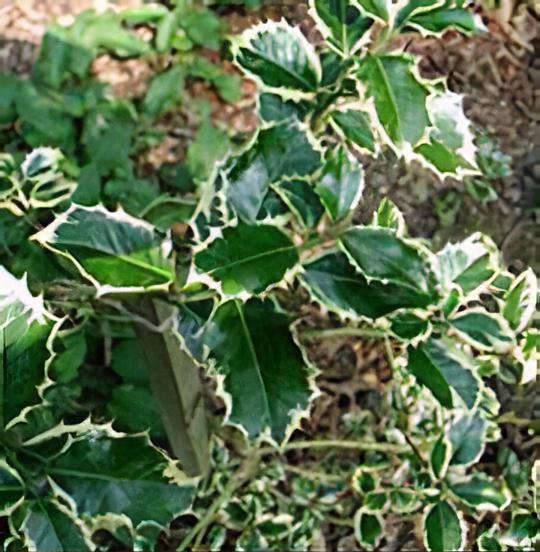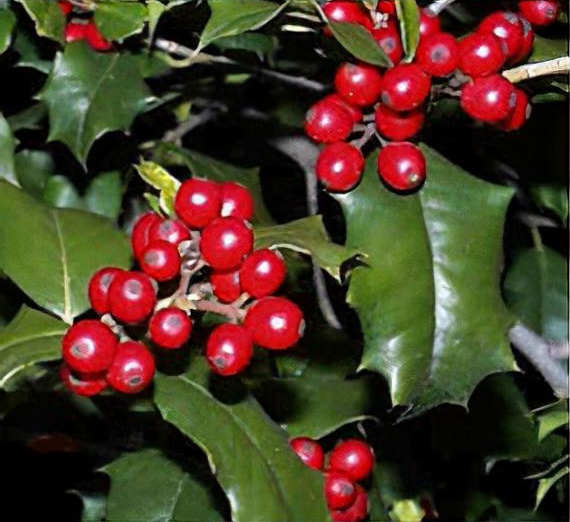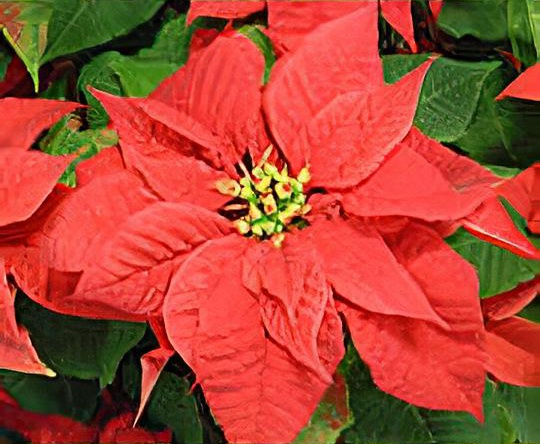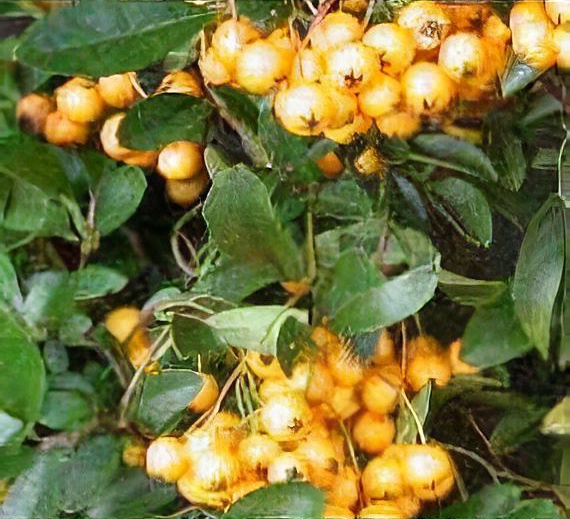Deck the Halls

By garden designer Andrew Fisher Tomlin. Christmas is coming and we're decorating our houses with all sorts of flowers and plants from the traditional to the contemporary and funky.
1 Dec 2007 | 3 min read
The most well known plants have always been the traditional holly, ivy and mistletoe. Holly trees are very traditional in some areas of London and you can see magnificent specimens of native Ilex  aquifolium clipped into beautiful shapes at the front of many older houses. There's a street I know in Islington where every house stills has a pair of beautiful variegated hollies but I also know of some really great specimens in Kingston, Wimbledon and Merton Park.
aquifolium clipped into beautiful shapes at the front of many older houses. There's a street I know in Islington where every house stills has a pair of beautiful variegated hollies but I also know of some really great specimens in Kingston, Wimbledon and Merton Park.
This is an ideal time to be pruning hollies into shape so rather than throw out the cuttings bring some indoors to decorate your home. And of course you can always plant up a holly now for future supplies. Its usually thought that its not so easy to get good berries as you'll need two plants, a male and a female to achieve this. However, there are a few varieties such as Ilex aquifolium 'JC van Tol'  that are self fertile and will produce berries on their own.
that are self fertile and will produce berries on their own.
Mistletoe Viscum album is actually a parasitic plant. Once its seed is deposited on tree bark its roots are sent deep into the fabric of the host plant using this plants water and nutrients to produce its own growth. The seeds are 'planted' at such great heights by birds - the Anglo-Saxon word for Mistletoe was dung-twig. I'm often asked how you can get Mistletoe to take on trees and its actually a lot easy than this might suggest! You need quite a lot of patience and some fresh ripe berries and all you need to do is simply squash the berries into the cracks and crevices on the bark of the new host tree. Some people cover the areas with muslin to act as a marker.
The first signs of success will take about two years when the first leaves appear and then it will be another few years before you'll get sizeable clumps and be able to tell whether you have male (smaller leaves) or female growth. It's the female growth that gives the berries and Victorian tradition tells us that one berry is taken off for each kiss and once all plucked off the kissing privilege ceases!
 The fresh flowers and foliage of real plants contain some spirit-lifting magic not shared by artificial decorations. Poinsettias are great but try an unusual variety or you can really let your imagination go wild and use the vast array of fresh cut flowers available to us to give your home some sparkle.
The fresh flowers and foliage of real plants contain some spirit-lifting magic not shared by artificial decorations. Poinsettias are great but try an unusual variety or you can really let your imagination go wild and use the vast array of fresh cut flowers available to us to give your home some sparkle.
I'm not a florist but we never get rid of useful items that come our way to create some great Christmas displays. Old terracotta pots are my favourite filled with displays of winter cherry or very early bulbs such as forced crocus.
I've also got a wire basket that came to me with a bottle of port in it years ago that is used time and time again for a centrepiece or for a hallway display. I'm lucky enough to have neighbours with a  huge pine tree that drops cones onto the office roof. Once a year I get up there and retrieve these to create simple displays in the basket, interspersed with Pyracantha berries, ivy and candles.
huge pine tree that drops cones onto the office roof. Once a year I get up there and retrieve these to create simple displays in the basket, interspersed with Pyracantha berries, ivy and candles.
For a contemporary take buy hyacinths in bunches and place them in clear glass vases. They will fill the house with fragrance for at least two weeks. To ensure they are at their peak for Christmas Day, buy a week ahead to let the flowers open up. I also love a bit of luxury at Christmas and will invest in a few out of season blooms such as plump cream or pink roses as a focal point. This years 'in' colours are sharp pinks and lime greens so to be really up to date and trendy try Roses, Hyacinths and Alchemilla mollis.
Many of these ideas can be created with very little outlay and will repay you with weeks of colour and fragrance. Whatever you fancy, whether it's a traditional look or a simple contemporary display make sure you bring the outside inside this Christmas.
